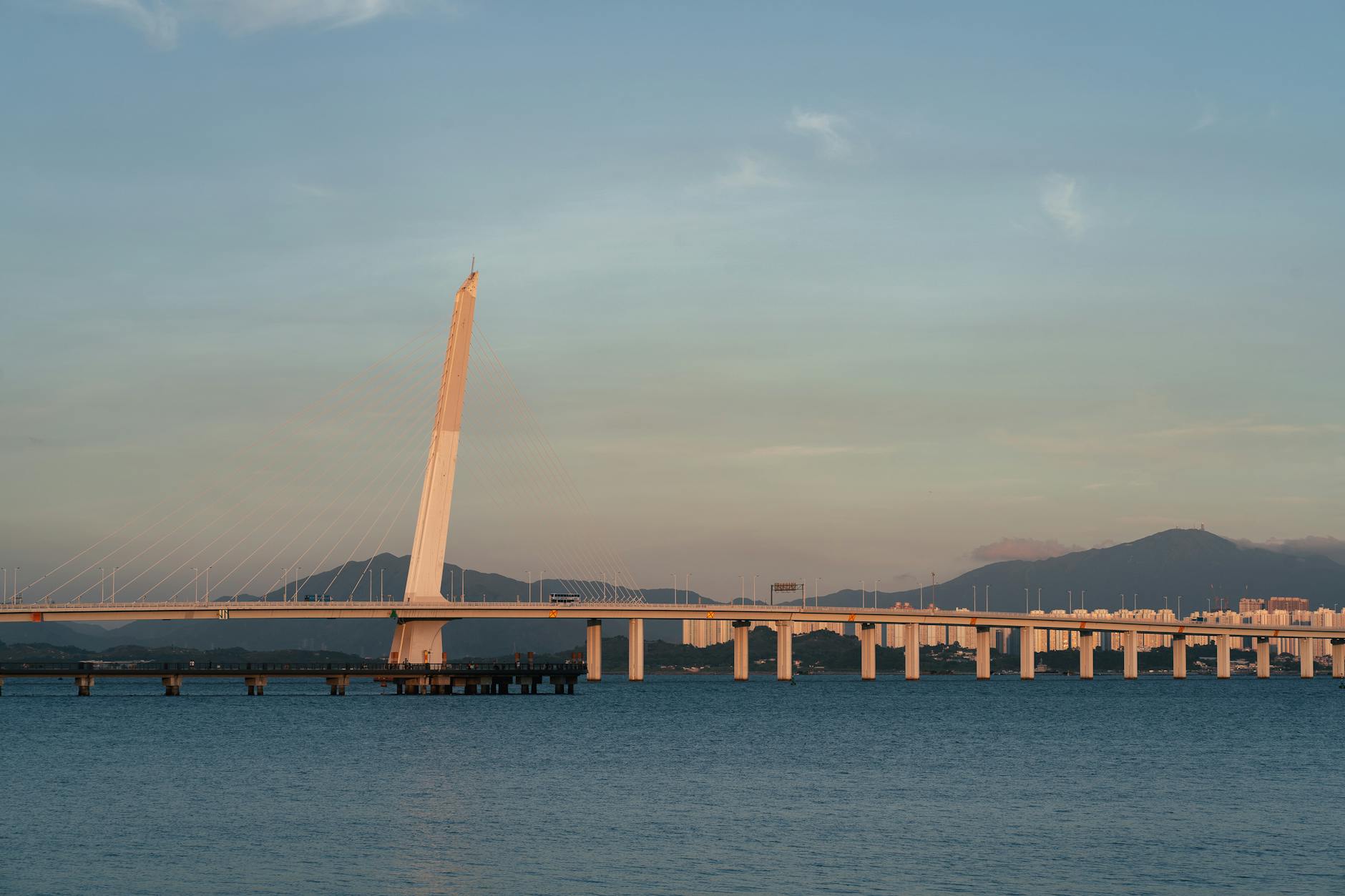The Invisible Walls: How Data Brokers Are Burying Your Right to Be Forgotten
A damning investigation reveals dozens of companies are actively obscuring the paths for individuals to reclaim their digital privacy.
In the sprawling, often opaque universe of personal data, there exists a fundamental right for individuals: the ability to ask for their information to be removed. This right, often referred to as the “right to be forgotten” or simply the “opt-out,” is a cornerstone of digital privacy in an age where our every click, search, and interaction can be monetized. Yet, a recent, groundbreaking investigation by The Markup and CalMatters has unearthed a disturbing reality: dozens of data broker companies are actively making it incredibly difficult for you to exercise this right. They are, in essence, hiding the doors that lead to reclaiming your digital self, deliberately obscuring their opt-out pages from the very search engines that many people rely on to find them.
This isn’t a minor technical glitch or an unfortunate oversight. The findings suggest a concerted effort by a significant portion of the data brokerage industry to erect invisible walls, making it a burdensome, almost futile task for ordinary individuals to manage their digital footprint. For those who value privacy, or are simply concerned about the sheer volume of personal information circulating about them online, this revelation is a stark reminder of the power imbalances at play in the digital economy. It raises critical questions about accountability, consumer protection, and the very definition of privacy in the 21st century.
Context & Background
To understand the gravity of this issue, it’s crucial to grasp what data brokers are and why they operate the way they do. Data brokers are companies that collect, aggregate, analyze, and sell personal information about individuals. They gather data from a vast array of sources, including public records (like voter registrations and property records), commercial sources (like loyalty programs and warranty registrations), online activity (like website visits and app usage), and social media. This information can include everything from your name, address, and phone number to your purchasing habits, political leanings, health concerns, and even sensitive personal details.
The data brokerage industry is enormous and largely unregulated. While some companies are transparent about their practices, many operate in the shadows, their business models built on the premise of gathering as much information as possible. This data is then packaged and sold to a wide range of clients, including marketers, advertisers, insurers, employers, and even government agencies. For these clients, access to detailed consumer profiles is invaluable for targeted advertising, risk assessment, and a variety of other purposes.
The rise of the internet and digital technologies has exponentially amplified the scope and scale of data brokering. Every online interaction leaves a digital trail, and data brokers are adept at collecting and connecting these disparate pieces of information to create comprehensive profiles of individuals. While this can sometimes lead to personalized experiences and relevant advertising, it also raises profound privacy concerns. The potential for misuse, data breaches, and the sheer invasiveness of having one’s life meticulously cataloged and traded without explicit consent is a growing anxiety for many.
In response to these growing concerns, various privacy regulations have emerged globally. In the United States, while there isn’t a single, overarching federal privacy law like Europe’s General Data Protection Regulation (GDPR), several states have enacted their own comprehensive privacy laws. The California Consumer Privacy Act (CCPA), for instance, grants California residents significant rights regarding their personal information, including the right to know what data is being collected, the right to request deletion of their data, and the right to opt-out of the sale of their personal information. Similar legislation has been passed in other states like Virginia (Virginia Consumer Data Protection Act – VCDPA) and Colorado (Colorado Privacy Act – CPA).
These laws often mandate that companies provide clear and accessible ways for consumers to exercise their rights, including opting out of the sale or sharing of their data, and requesting the deletion of their personal information. For data brokers, this typically means providing an “opt-out page” or a dedicated process for individuals to submit such requests. The expectation, driven by both consumer demand and legal requirements, is that these opt-out mechanisms should be readily available and easily discoverable.
In-Depth Analysis
The investigation by The Markup and CalMatters focused on this very aspect: the discoverability of opt-out pages. They employed a systematic approach, using Google searches with specific phrases and keywords that individuals would likely use when trying to find these opt-out mechanisms. These phrases included terms like “opt out,” “remove my data,” “stop selling my information,” and variations thereof. They then analyzed the search results from dozens of data broker websites.
The findings were stark and deeply concerning. A significant number of data broker websites were found to be deliberately manipulating their search engine optimization (SEO) strategies, or lack thereof, to make their opt-out pages virtually invisible to Google searches. This wasn’t a case of a poorly designed website; it was a pattern of behavior that suggested an intentional effort to hinder individuals from accessing these crucial privacy tools.
Here’s a breakdown of the observed tactics and their implications:
- Lack of Indexing: Many data brokers failed to “index” their opt-out pages. Indexing is the process by which search engines like Google crawl and catalog web pages. If a page is not indexed, it won’t appear in search results, even if the content exists on the website. This is a fundamental SEO practice, and its absence for opt-out pages is a clear signal of intent.
- Robots.txt Manipulation: Some websites use a file called “robots.txt” to communicate with search engine crawlers. This file can be used to block crawlers from accessing specific pages or sections of a website. The investigation found instances where data brokers might have used robots.txt to prevent search engines from indexing their opt-out pages.
- Noindex Meta Tags: Similar to robots.txt, websites can use a “noindex” meta tag within the HTML of a page to tell search engines not to include that page in their search results. This is a more direct way of blocking a page from appearing in search.
- Deeply Nested Links: Even when opt-out pages were not explicitly blocked, they were often buried deep within website structures, accessible only through multiple clicks and obscure navigation menus. This makes them incredibly difficult for the average user to find organically, even if they were actively browsing the site.
- Generic or Misleading Link Text: Links leading to opt-out pages were sometimes labeled with vague or misleading text, such as “manage preferences” or “customer service,” rather than explicit phrases like “opt-out” or “delete my data.” This further obfuscates the purpose of the page.
- Reliance on Direct URLs: In some cases, the only way to access the opt-out page was by knowing its exact, specific URL. This effectively shifts the burden of discovery entirely onto the individual, requiring them to possess prior knowledge or stumble upon the link through indirect means.
The implications of these tactics are significant. For individuals who are not tech-savvy or who are unaware of the specific phrases to use, finding these opt-out pages becomes an insurmountable challenge. They are left with the false impression that their data cannot be removed or that the companies are compliant when, in reality, the pathways to exercising their rights are intentionally obscured. This undermines the spirit, if not the letter, of privacy regulations designed to empower consumers.
The companies identified in the investigation represent a broad spectrum of the data brokerage industry, indicating that this is not an isolated issue but a systemic problem. This widespread behavior suggests a collective understanding within certain segments of the industry that hindering opt-out access is beneficial to their business model, which relies on the continuous collection and sale of personal data.
Pros and Cons
While the primary focus of this issue is the obfuscation of opt-out pages, it’s worth considering the broader context of data brokering and the motivations behind such practices, even if those motivations are primarily commercial and detrimental to individual privacy.
Pros (from the perspective of data brokers and their clients):
- Maximizing Data Collection: By making it difficult to opt out, companies can retain more personal data on individuals, which can be used for more extensive profiling and targeted marketing.
- Increased Sales & Revenue: A larger pool of accessible data can lead to more effective and higher-yielding advertising campaigns and data sales, directly impacting revenue.
- Reduced Operational Burden: Managing opt-out requests requires resources and processes. Hindering access to opt-out pages can reduce the volume of such requests, saving operational costs.
- Competitive Advantage: In a highly competitive market, retaining more data than competitors can provide an edge in understanding and targeting consumer segments.
- Limited Consumer Awareness: If consumers cannot easily find or understand how to opt out, they are less likely to do so, allowing data brokers to continue business as usual.
Cons (for individuals and society):
- Erosion of Privacy: The primary casualty is individual privacy. Consumers are denied meaningful control over their personal information, leading to a feeling of powerlessness.
- Undermining of Consumer Rights: This behavior directly contravenes the intent of privacy laws and regulations designed to protect consumers. It creates a system where rights exist in theory but are inaccessible in practice.
- Increased Risk of Data Misuse: With more data in circulation and fewer individuals opting out, the risk of data breaches, identity theft, and discriminatory practices based on personal information increases.
- Lack of Transparency and Trust: This covert approach erodes trust between consumers and the data industry. It suggests a lack of good faith and a disregard for consumer well-being.
- Stifled Competition and Innovation: While data brokers might see an advantage, a lack of robust privacy controls can discourage the development of privacy-first technologies and business models.
- Potential Legal Repercussions: While companies might be attempting to skirt the rules, such deliberate obfuscation could lead to significant fines and legal challenges if discovered and prosecuted by regulatory bodies.
Key Takeaways
- Dozens of data broker companies are actively hiding their opt-out pages from Google search results.
- This is achieved through various methods, including failing to index pages, using robots.txt, employing “noindex” meta tags, and nesting opt-out links deep within website structures.
- The intent appears to be a deliberate effort to make it difficult for individuals to exercise their right to delete or stop the sale of their personal data.
- This practice undermines consumer privacy rights and the spirit of privacy regulations like the CCPA.
- The widespread nature of this behavior suggests a systemic issue within the data brokerage industry.
- Individuals who value their privacy face significant challenges in managing their digital footprint due to these hidden mechanisms.
- The findings raise serious questions about the enforceability of existing privacy laws and the need for greater transparency and accountability from data brokers.
Future Outlook
The revelations from The Markup and CalMatters investigation are likely to have a ripple effect. Firstly, regulatory bodies, particularly in states with strong privacy laws like California, will be under increased pressure to investigate these practices and enforce existing regulations more rigorously. We could see more targeted audits of data broker websites and potentially stricter guidelines on how opt-out mechanisms must be presented and made discoverable.
Secondly, consumer advocacy groups are expected to amplify their calls for stronger privacy protections and more effective enforcement mechanisms. This could lead to renewed efforts to pass comprehensive federal privacy legislation in the United States, which would ideally include clearer mandates for the discoverability and accessibility of privacy controls.
From a technological standpoint, there may be a push for tools and browser extensions that actively identify and flag websites that obscure their opt-out pages, empowering consumers with more information. Search engines themselves might also face pressure to develop better algorithms or flags to identify and penalize websites that deliberately hide privacy-related functionalities.
For the data brokerage industry, this could signal a period of greater scrutiny. Companies that continue to employ these obfuscation tactics risk significant reputational damage, substantial fines, and potential legal challenges. The long-term sustainability of business models that rely on circumventing consumer privacy rights is increasingly questionable in an era of growing privacy awareness and regulatory oversight.
Ultimately, the future outlook depends on the willingness of regulators to act, the advocacy of consumer groups, and the demand from individuals for greater control over their data. The current situation highlights a clear disconnect between the legal rights granted to consumers and their practical ability to exercise them. Bridging this gap will require a multi-pronged approach involving legislative action, robust enforcement, and technological solutions.
Call to Action
The findings of this investigation are a clear call to action for all individuals concerned about their digital privacy. Here’s what you can do:
- Be Proactive: Don’t wait for your data to be misused. Make an effort to find and utilize the opt-out pages of data brokers you encounter or suspect are collecting your information. Even if they are difficult to find, persist. Search using various terms like “opt out [company name],” “remove my data [company name],” or “[company name] privacy.”
- Demand Transparency: Contact your elected officials at both the state and federal levels and urge them to support and pass stronger, more comprehensive privacy legislation that mandates clear and easily accessible opt-out mechanisms for all companies.
- Support Privacy Advocacy Groups: Organizations like the Electronic Frontier Foundation (EFF), the Center for Democracy & Technology (CDT), and Consumer Reports advocate for stronger privacy rights. Consider supporting their work through donations or by signing their petitions.
- Educate Yourself and Others: Learn about the data brokers operating in your space and the privacy rights available to you. Share this information with friends, family, and colleagues to raise awareness about this critical issue.
- Report Non-Compliance: If you discover a company that is making it exceptionally difficult to opt out of data collection or sale, consider filing a complaint with your state’s Attorney General or relevant privacy enforcement agency.
- Be Mindful of Your Digital Footprint: While not always feasible to avoid entirely, be conscious of the information you share online and with apps. Review privacy settings regularly and consider using privacy-focused browsers and tools.
The power to control your personal data should not be an elusive quest. By taking these steps, you contribute to a more transparent and privacy-respecting digital ecosystem, ensuring that your right to be forgotten is not just a theoretical concept, but a tangible reality.









